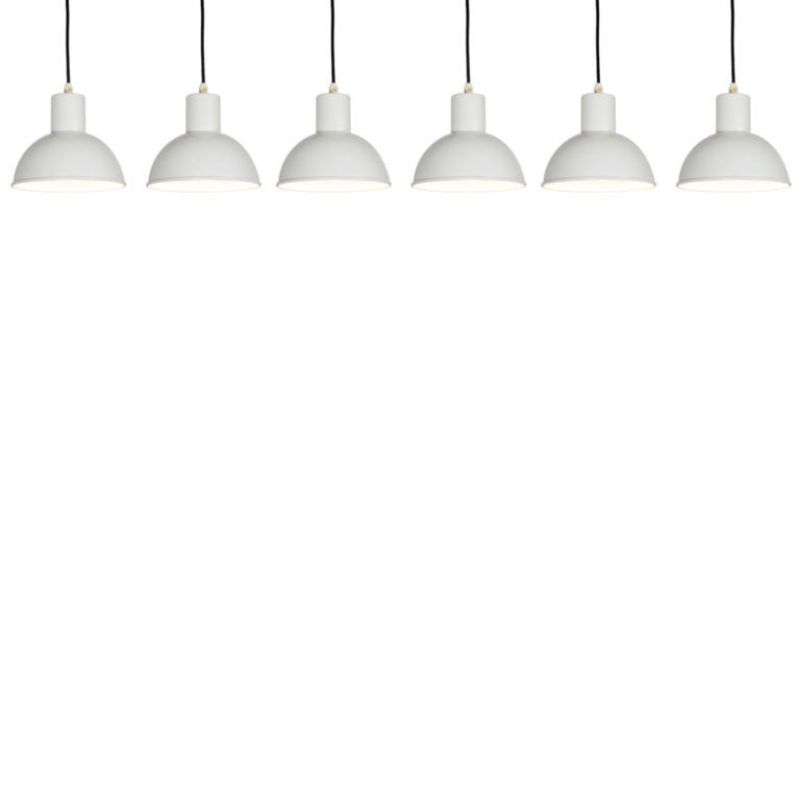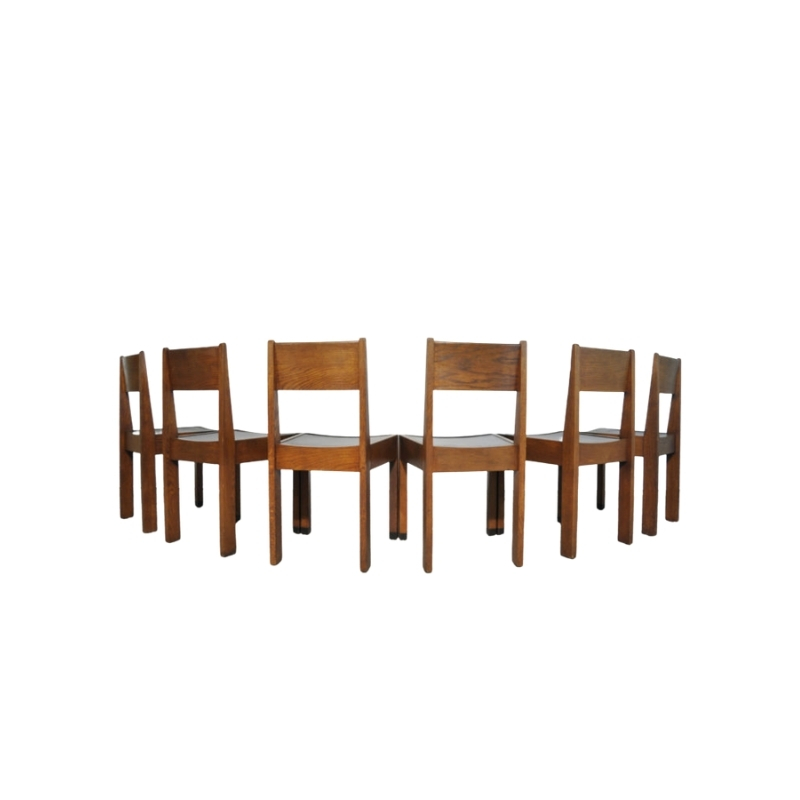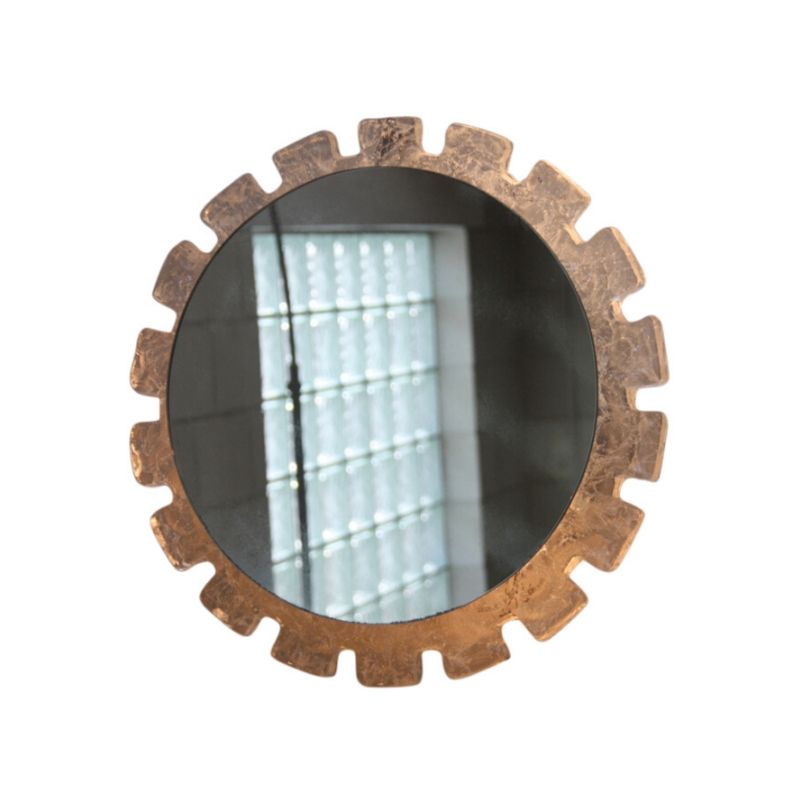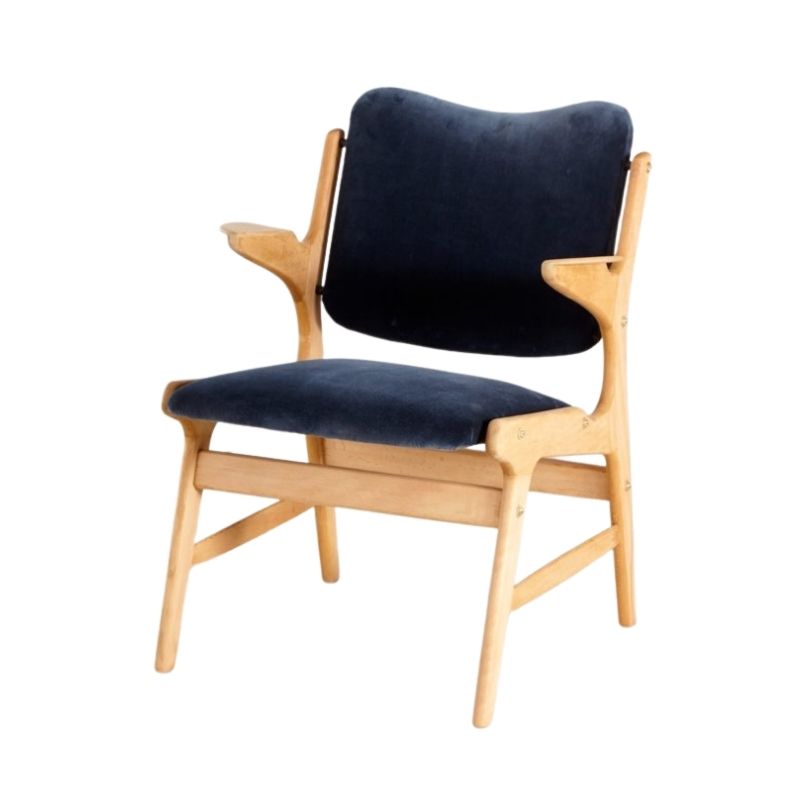Wood
I want to make it clear that my use of the word "knockoff" wasn't meant to disparage the creators of this chair. I think it looks great and it's comfortable, which is why I bought it for my living room. I want to know their name so I can perhaps see some of their other work.
The wood species isn't obvious to me. It's more orange than most walnut I've seen, but I haven't seen much walnut. The finish is worn away along the front edges of the arms, and the wood looks much lighter there, so I think much of the color is in the finish.
Hard for me to tell from the...
Hard for me to tell from the photos, but if you shine a light in the keyhole connections and the wood is lightly colored, then it's most likely stained beech. The keyhole connections themselves look very similar to the Danish knock-down designs for the overseas markets. However those details could easily have been transferred from Denmark to Yugoslavia.
The finger joint appears to be either poorly constructed or reglued loosely at a later date. It also appears to be sharped toothed, whereas the usual Danish finger joints have a "curved wavelength" shape.
Leather straps?
Is that a leather strap I am seeing? Or just a trick of the photography. And if it is leather is there any evidence that it isn't original. I wouldn't expect to see leather seat straps
And those photos of the wood don't look much like walnut or stained beech. I don't think that wood is any of the usual suspects.
Both of which make me think the answer is none of the above.
Rubber straps
The straps are rubber. The last few inches of the ends are laminated with a fabric. They're a little stretched out, but I'm going to leave them as is for now.
The finger joints are saw-tooth-shaped, not wave-shaped. The lousy glue-job is my own doing. That one joint was loose and it had a larger gap than in the photo, but the other 3 on that side were still fairly solid. To fix it properly, I would have to have pried the other 3 joints apart and I was worried that I would damage the laminated arm in the process, and I just didn't feel like getting into that big of a project. So I just injected some yellow wood glue and clamped it as tight as it would close. It's reversible if I ever decide to dismantle it completely to do a proper repair.
Fabric laminated straps
are not something I've personally ever seen on "Danish" or Yugoslav furniture. But that might be the sort of detail that someone here recognizes as characteristic of a certain maker/country of origin and I am just not familiar with it. To my mind the rubber does place it closer to the mainstream of "danish" design than leather seat straps would.
Regarding the wood, the big reason it looks so strange is that the growth rings are so wide. They are so wide that they suggest temperate soft woods, but that is impossible. Teak can have rings that wide, but that wood is not teak. Maybe timbers sawn nearly tangential to the growth rings of a VERY happy beech tree could account for the appearance. Knowing that the wood is light inside would certainly strengthen the case for beech/maple, and suggest a Yugoslav origin.
The needle-eye slats are back. . .
. . . in a current eBay auction. Looks almost identical to the high-back rocker a few posts above. While the seller notes no makers mark present, they didn't hesitate to throw a little Kofod Larsen and Selig in the heading.
http://www.ebay.com/itm/DANISH-MODERN-Mid-Century-Kofod-Larsen-SELIG-ROC...
If you need any help, please contact us at – info@designaddict.com











